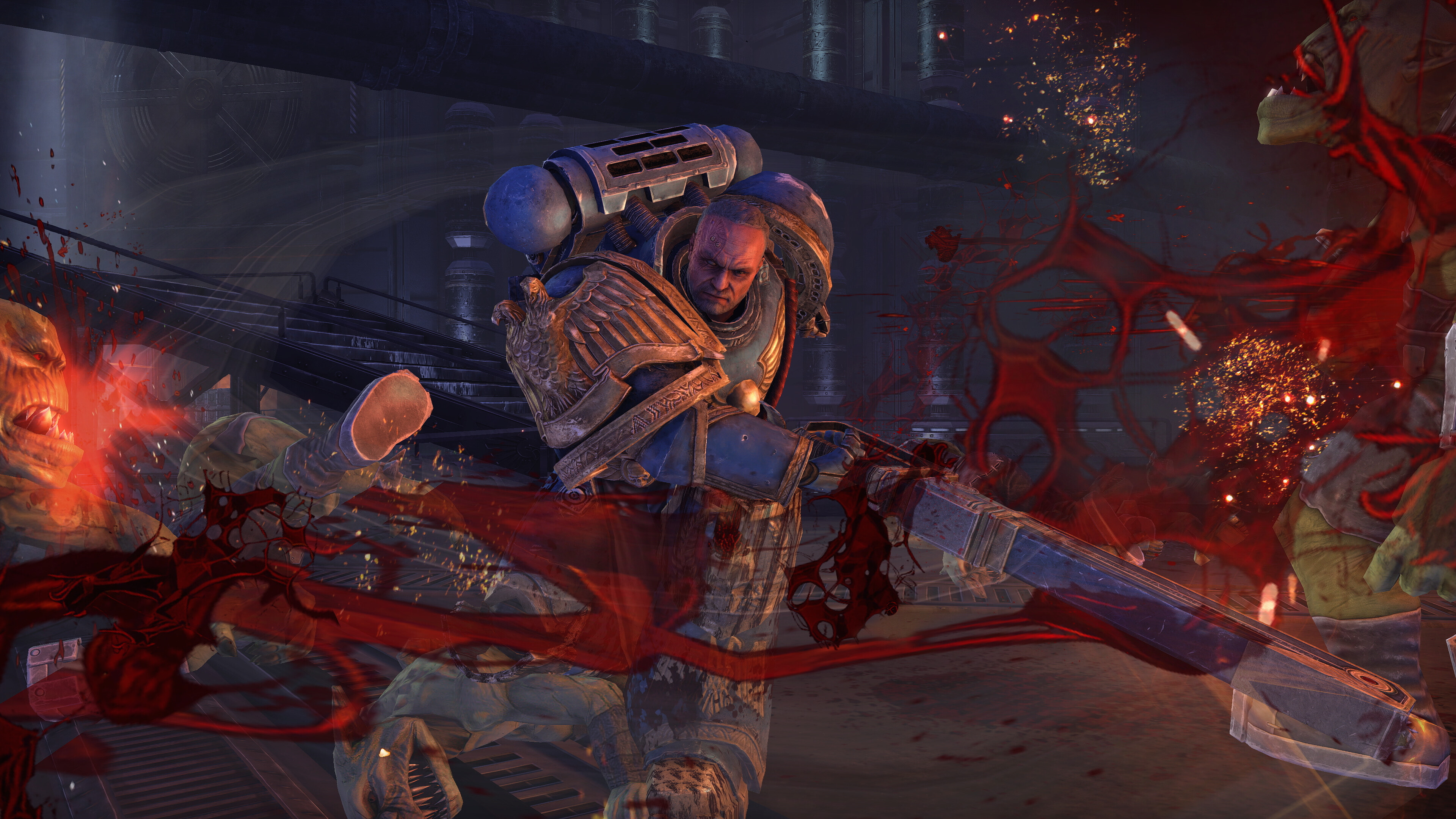
When you think of RoboCop, you think of a one-man tank. A heavily armed and armored dealer of justice who patrols the streets of Detroit while walking really slowly. Honestly, it’s a surprise he ever makes it to the scene of the crime on time, given the pace he ambles along. It’s even more of a surprise that RoboCop’s methodical movement from the movies has made it into Rogue City, which is a first-person shooter – a genre traditionally dominated by games where speed and agility are key.
Of course, RoboCop’s slow and precise movements are two crucial parts of his identity, so it was always the plan to make that an important part of the game. However, it meant rethinking the way the developer approached making a first-person shooter. “It was one of the biggest design challenges, to get that slow and heavy character into the game,” explains Piotr Latocha, RoboCop: Rogue City’s game director. “He’s kind of slow and tankish, and we need to be true to the lore, but also we cannot be super slow and super heavy. So finding that spot – how to make this character interesting, so the combat was fluid – was the biggest challenge.”
As such, much of the movement and agility you see in other shooters simply isn’t in Rogue City, and you’ll need to rethink how you play an FPS when you play RoboCop for the first time. “He cannot do stealth or crouch,” says Latocha, talking about the limitations of having a main character who’s mostly made out of titanium. “But he can do other things that are cool with this character. So, for example, breaching walls, throwing heavy enemies, grabbing enemies and throwing them. There’s a lot of stuff that a heavy character can do, but also we have a skill tree where we unlock some skills, some of them are active, and you can use some of them to expand on the gameplay as well.”
Skill points are earned by completing quests and scanning objects scattered around Detroit as you work through the story, and can be spent upgrading RoboCop’s many abilities. Rogue City bridges the gap between RoboCop 2 and 3, so RoboCop is already an established member of the Detroit Police Department and is kitted out with several abilities available from the outset. Some are lifted straight from the films, such as aiming down sights to scan and pinpoint the whereabouts of nearby hostiles, but there are others that have been introduced for the game.
“Breaching walls, grabbing enemies and throwing them – there’s a lot of stuff that a heavy character can do”
There’s slow-motion, which obviously slows down time for a few seconds, giving you the edge when it comes to aiming at enemies. There’s dash too, which gives a temporary speed boost – although it still feels very much in keeping with the slow pace of the action. “It’s not running but moving faster,” enthuses Latocha. “So if you move faster into the enemies, they fall down. You can use this to your advantage – they’re not dead, they’re knocked down, but you can finish them off easily.”
There are other abilities too: “Shockwave works basically like a police flashbang, so you can stun the enemies, explains Latocha. “But it’s the first version of the Shockwave skill. If you upgrade it until the very end, it’s deadly. So if you stun the enemies [with the upgraded Shockwave skill], they’ll fall down dead.”
While some of these abilities stray from RoboCop’s original blueprint in the movies, they don’t feel out of place for the souped-up cyborg. One element that’s completely authentic to the movies is RoboCop’s Auto 9 machine pistol, which he uses throughout the story. It’s a powerful weapon, even at the beginning, but there are plenty of upgrades to unlock as you progress. “That was actually one of the challenges, because we wanted to keep the player using the Auto 9 because it’s his iconic weapon,” says Latocha. “It’s something that RoboCop uses a lot so it needs to be fun, it needs to feel powerful. But we also used an upgrade system to [improve] the Auto-9, so as the game proceeds you can make it stronger and stronger.”
Examples of Auto 9 upgrades include reducing the recoil so it’s more accurate, switching from burst fire to full auto, and explosive bullets. But even in its original set-up, the Auto 9 has a large magazine and infinite ammo, so it makes light work of the enemies during the opening levels of the game. But there is an element of strategy, despite its power, as Latocha explains: “When you run out of ammo you need to reload. But do you want to reload, or just run into the nearest guy and punch them?” And when RoboCop’s punch can smash through skulls, it’s a pretty handy back-up if the ammo counter clicks zero.
“We wanted to keep the player using the Auto 9 because it’s his iconic weapon”
There will also be times when an alternative weapon makes more sense, as Latocha continues: “We wanted to give [the player] some variety. So we have some side arms that you can use but you cannot carry them from level to level, or chapter to chapter. But you can just pick them up, play with them, and some [are better] in different situations.”
Despite this focus on aggression, developer Teyon always wanted RoboCop: Rogue City to be more than just another FPS. “This was actually really important to us, that it’s not only a first-person shooter but it’s much more than that,” affirms Latocha. “We wanted to build on the RPG elements, so dialogue choices, dialogue trees, and those skills actually help you to solve some things in different ways. Psychology sometimes lets you talk someone into doing something without using violence, or skills like Engineering can unlock a dialogue option that enables you to talk someone out of doing something.”
It seems there is still a man behind the mask then, and that RoboCop: Rogue City will require you to use your brain as much as your trigger finger. Well, almost.
Emma Matthews is IGN’s Junior Syndication Editor.






